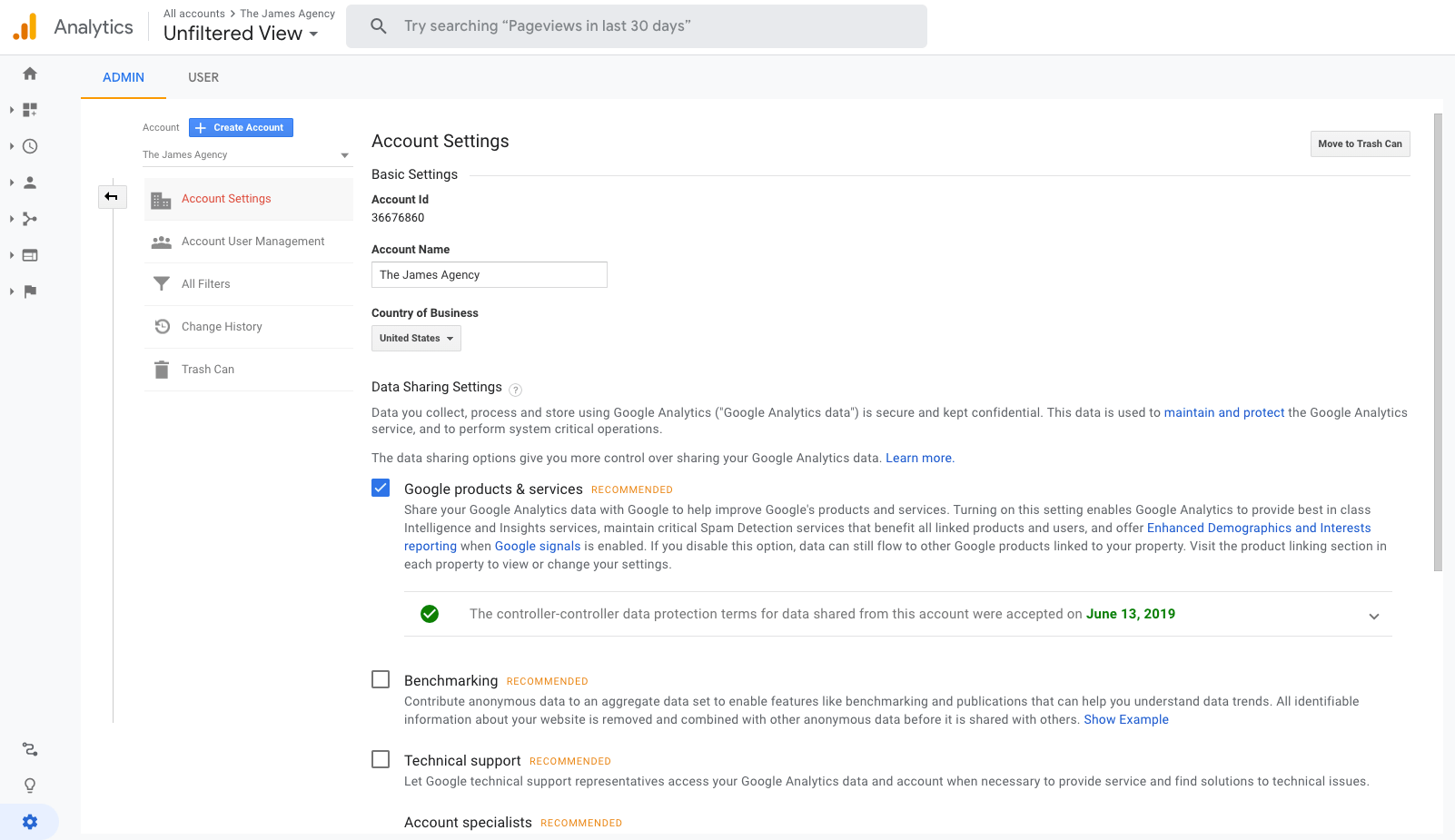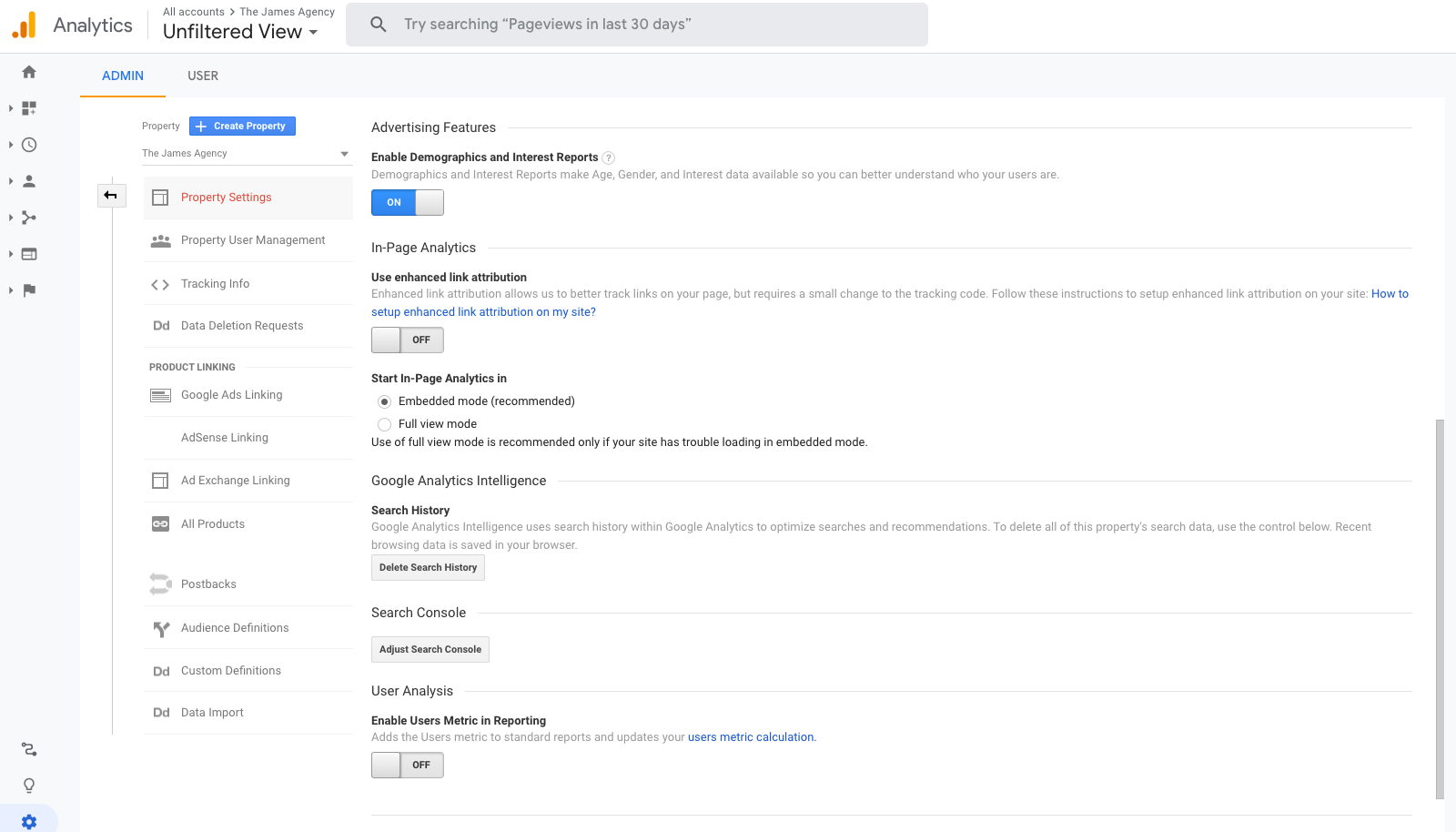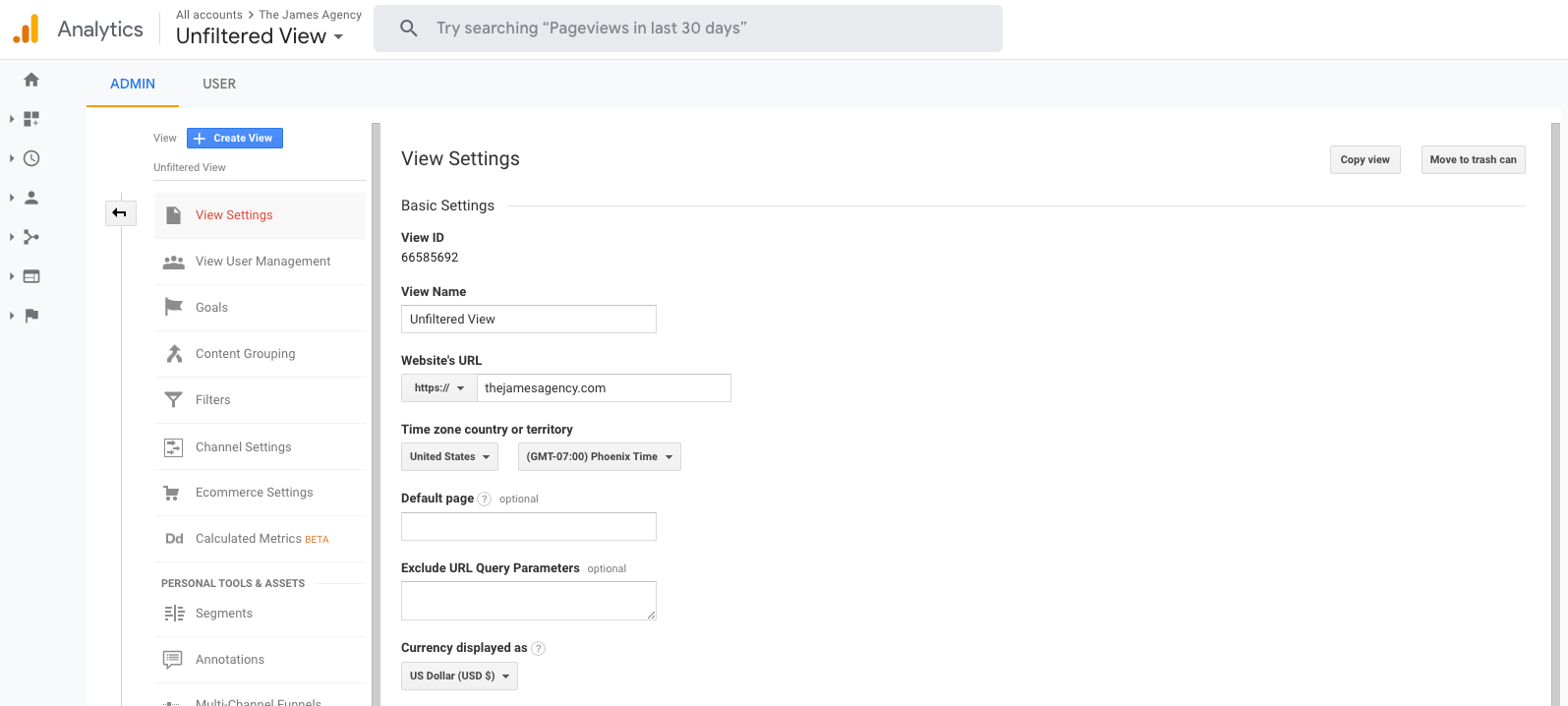Last year we published the blog “So you installed Google Analytics. Now what?” This audit guide will reference some of the items covered in that blog, as well as some additional tips and tricks to make sure your Google Analytics account is set up to track your business’ success. Google Analytics is set up in a hierarchy of three stages: account, property and view. How you set up each stage will effect the following stage, so take your time and set each one up correctly for the most usable and reliable data.
Account
The Account level is the quickest to set up as you are simply naming your account, choosing the country your business is in and setting the account user management.
Once you begin working through setting up the properties and views under your account, the account level access will show you a little more. For example, at the account level you can get a quick view of all the filters that have been set up for all the views, and what I think is the most valuable: the change history for each property and view.

Property
Within Google Analytics a property is a website, mobile application or blog, etc. that is associated with a unique tracking ID. You can learn more about properties from Google Support. Multiple properties can live within a single Google Analytics account.
The Property level is where a lot of mishaps can happen that can cause your data to be inaccurate and potentially unusable. It is within the Property level that you should enable demographic tracking for all views in your account, this allows you to see the age, gender and interests of the users that are visiting your website.
Possibly the most important step at the Property level is to configure the Referral Exclusion List. The Referral Exclusion List allows you to “exclude domains from your referral list. Users arriving at your site via any of these domains will not be counted as referral traffic in your reports.” This means if you should have a booking engine within your site, you should add that to your exclusion list so GA won’t attribute conversions back to a nonexistent source. As a best practice, you should add your website URL in the exclusion list as well.
If you begin running Google Ads, you should come back to the Property settings and set up the Google Ads Linking. This allows for the two platforms, Google Ads and Google Analytics, to share data back and forth to provide better reporting for your Google Ads efforts.

View
A view within Google Analytics is where you will be digging into the data for analysis. When setting up your account Google Analytics automatically creates one unfiltered view for every property.
As explained in our previous Google Analytics blog we recommend having a total of four views set up in Google Analytics,
- All Website Data: absolutely no filters should be placed on this view
- All Website Data + Filters: this view should include all the filters and have goals set up within it
- Testing: when initially setting this view up, it isn’t necessary to include any filters or goals
- Internal Website Data: this view should have a filter that includes only your business’ IP address
Some additional items to set up on a view level include:
- Ecommerce
- Setting up E-commerce tracking requires placing additional code on your website, but being able to see the dollar amount that is coming from different traffic sources will help you make better business decisions like where to invest additional ad spend or where not to reduce spend.
- Goals
- This is where you would set up tracking for things that make a difference for your business. This could include anything from email newsletter sign-ups or e-commerce purchases. Setting up Goals allow you to also create funnels within Google Analytics, that will help you understand where any potential drop off is happening in your check-out process.
- Bot Filtering
- Google Analytics makes it very easy to cut out a lot of bot (aka not human) interactions on your website. Within View settings, there is a single checkbox that will help keep fake traffic out of your data.

We recommend doing regular check-ins on how your account is set up from top to bottom to be sure you are always tracking what matters most to your business. Ready to start checking your account set up? Great! We made you a handy checklist to work through your account and ensure everything is in order.




